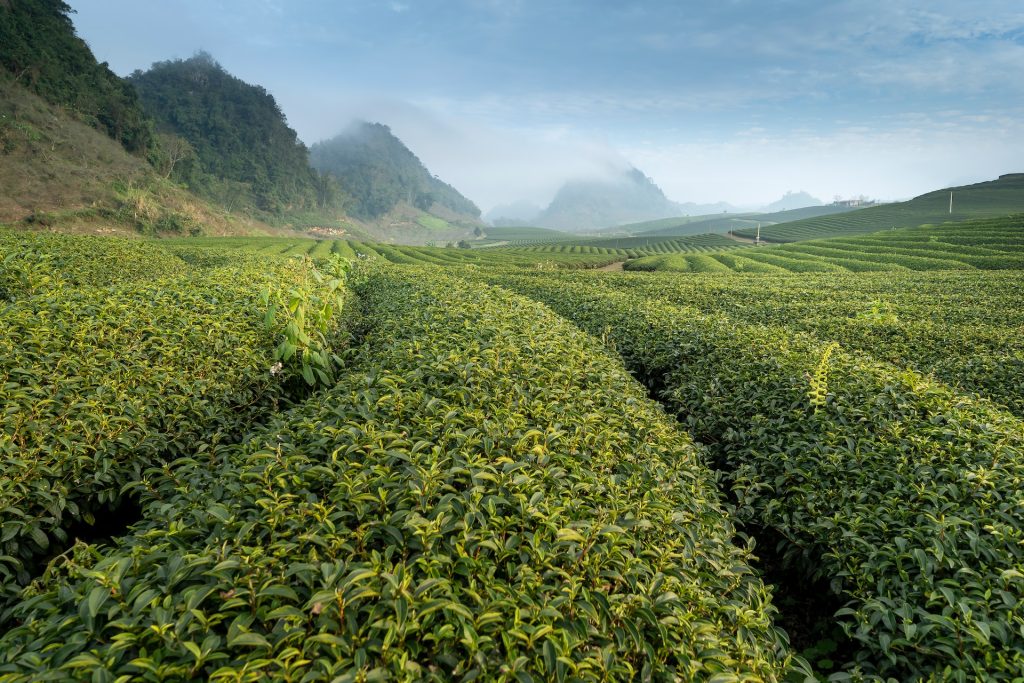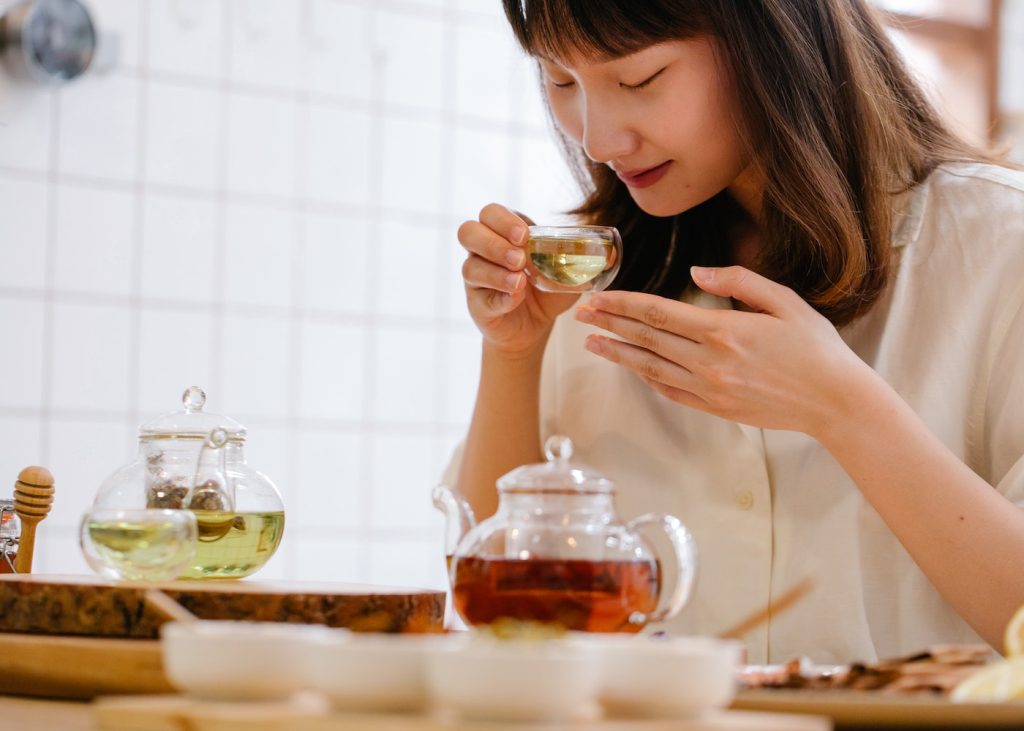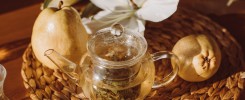Heap fermentation, temperature control reflects the level
Ripe tea refers to the tea made from Yunnan big-leaf sun-dried green tea as raw material and fermented by heaping. It is a new technology invented by modern tea people in Yunnan on the premise of socialized mass production. The fermentation process comes down to: Sprinkle water in a certain proportion on the sun-dried green tea to make the tea moist. Then cover it with cloth and other items, which is called Wodui. With water and temperature, the tea leaves begin to ferment. After a few days, the cover is opened, and the tea is turned over once, which is called turning over the pile. Repeat this for 7 to 9 times, and after about 45 days, the sun-dried green tea will become cooked tea.
The principle is simple, but it is definitely a technical job. The core is: the maximum temperature during the compost fermentation process should not exceed 60°C, the minimum temperature should not be lower than 50°C, and it is best controlled between 55°C and 60°C. If the temperature is not controlled, when the temperature exceeds 60°C, “burning phenomenon” will occur. Turning over in the pile is to solve the problem of high temperature. Once the pile is found to be overheated, spread it out to dry immediately, and then pile it again.

There is a theory of seven turns and nine turns in Wodui. In fact, every turning and stacking is a process of re-fermentation. Only when the processing of Pu-erh tea is below 60°C can the various “enzymes” and the “activity” of microbial flora contained in the tea be protected. Thus protecting the “activity” of Pu’er tea. Of course, if the temperature is lower than 55°C, it will not work, as it will rot the tea leaves. In the process of stacking and fermenting, a temperature of 55-60°C is the rule that is always followed in the process of making cooked tea.
In terms of temperature. Whether it is the temperature of “autoclaved” and “stacked” in compression molding, it cannot exceed 60°C. Just as we discuss the “finishing” temperature in the drying process. 60°C is the “life and death boundary” of Pu’er tea. However, maybe we will have such doubts: Pu-erh tea is used in the process of “steaming” and “stacking” before compression molding. The temperature should be between 75°C and 85°C, how can it be said to be 60°C?
Before compression molding, the heat has been attenuated when the steam passes through the pipe. And the “steaming tea” time is extremely short. This causes the outlet temperature of the steam to only reach about 70°C. And when the steam touches the tea leaves, the water contained in the tea leaves can disperse the heat and attenuate quickly. In addition, when the tea pectin is heated, it immediately polymerizes to form a protective film. All can make the temperature of tea itself not exceed 60 ℃. The reason why the “steaming” time is “short” is because the tea leaves are softened by “steaming”. It is easy to press and form, rather than “steamed”.
The beauty of matching, the alternative standard is magical
After the fermented pile of cooked tea is completed, it is called maocha (wool material). At this time, the raw tea is usually put into bags, and after being placed for three years, it is sieved and then autoclaved into solid shapes – balls, cakes, tuo, bricks. Or directly make loose tea after sifting out the grade. At this time, the cooked tea is finished as a product. In this process, the blending of Maocha is very important.
The so-called “blending” is a process of combining two or more raw teas with different shapes but with certain common characteristics to stabilize and improve the quality of tea. Raw teas are produced in different places, in different picking seasons, in different grades, and in the initial production process. Their shapes are also different. The purpose of matching is to maximize strengths and avoid weaknesses. The shape, color, aroma, and taste are all improved, and the quality characteristics are rich and colorful. Blending covers six aspects: blending of different grades, blending of different tea mountains, blending of different tea varieties, blending of different tea seasons, blending of different years, and blending of different fermentation degrees. The most common blends are different grade blends.

Whether it is new tea or old tea with a long history, you can find it when you cut them open. There are differences in the grades of tea leaves in the cover, heart, and surface, which shows the application of blending techniques. It also shows that the “layered sense” of cooked tea is inseparable from the skill of grade blending. Most blended teas are composed of three parts: Gai Cha, Xin Cha and Samian Tea. Heart tea is the main ingredient (inner material) of pressed tea, accounting for about 60%, and cover tea and surface tea are the tea (outside) of the surface and bottom of the tea cake, accounting for about 40%. Generally, tea of grade seven or eight is used as the “skeleton”. Make “muscle” with grade 3 or grade 5 tea. The “skin” is made of the first and third grade tea covers and noodles. The construction of this skeleton, muscle and skin structure can make the cooked tea appear layered and aesthetic. And make the subsequent fermentation step transformation.
Identification of raw materials for Pu-erh tea (whether raw or cooked). That is, the quality of Pu-erh tea should not be applied to the sensory evaluation methods of green tea and other teas. That is, the higher the grade of raw materials, the higher the nutritional value and the better the taste. Conversely, the lower the grade, the less nutrients. Pu-erh tea is about picking one bud and two leaves, and about the fusion of different grades of tea leaves. There are buds, leaves, and stalks, which makes Pu-erh tea resistant to foaming. Only then can there be different flavors tasted with the change of brewing times. Only then has the meaning of playing.
Taking the content of total reduced sugar in raw materials of Pu’er tea as an example, the results of testing by authoritative departments show that the content of seventh-grade tea is the highest. This is the main reason why the seventh-grade tea is widely used in cake tea, rather than “shoddy and lower cost”. This kind of thick and old tea is not only the main force for forming the “network skeleton” of cake tea. At the same time, due to the characteristics of the contained substances, it becomes the “backbone” for the subsequent fermentation and transformation of Pu’er tea.
The blending of Pu’er tea is a highly personalized art. Some people raise the blending to the height of aesthetics, calling it “the beauty of Pu’er tea blending”.
Cooked tea drinking, the mystery lies in the “three elements”
Understanding the production process of cooked tea is of great benefit to the tasting of cooked tea. The soup color, aroma, and taste are all good, so it is called a good tea. Good cooked tea should have three elements: good fermentation technology, good raw materials (spring materials), and the taste of time (more than 5 years). Good fermentation technology: 7 to 9 times of stacking, for 45 days, at a temperature of 55°C to 60°C, which is the initial stacking fermentation standard for cooked tea. The cooked tea fermented according to this method has a red soup color, deep red, and wine color. The aroma is relatively strong, and the cup is dry. Taste without bitterness, thick. The lightly fermented tea soup is ruddy, light red, and soft red wine color. The aroma retains a little raw tea aroma. The taste is bitter and astringent.

If the pile is higher than 60°C for a long time, the phenomenon of “heartburn” will appear. It is characterized by carbonization of the bottom of the leaf and inelasticity. The taste is dry and not lubricated, and the more you drink, the thirstier you become. Don’t return to sweetness, but return to bitterness. If the pile is lower than 55°C for a long time, the tea leaves will be rotten. The performance is that the bottom of the leaf is thin and soft, and can be kneaded into various shapes by hand. Smell the aroma is insufficient. The taste is slightly numb and slightly sour. The easiest way to identify this kind of tea is: do not pour out the bottom of the leaves after brewing, and smell them after overnight. Normally fermented tea still has a tea aroma, while this type of tea has a pungent off-flavor (sour smell).
Good raw materials (spring ingredients): Spring tea should be the most expensive of all teas, and cooked tea is no exception. With good technology, spring tea is used, the tea soup is red and thick, and the aroma is overflowing and lasting. The taste is sweet and smooth, and it is still sweet and delicious even after more than ten soaks. Summer and autumn teas have insufficient aroma, thin taste and lack of sweetness.
The taste of time: Ripe tea is the most important time (post-fermentation). In a fashionable phrase, it is the smell of time, a final process done by the tea keeper. It is the “tea depositor” based on their own understanding of Pu’er tea. Through the grasp of many factors such as temperature and humidity in storage, one or several sets of methods are summed up. “Forging” Pu-erh tea into better tea products, to be precise, is a process of quality reconstruction. It is a process of transformation from “ugly duckling” to “white swan”.

When cooked tea is made (including good technology and spring materials), there are two characteristics: one is that the soup color is cloudy and opaque, like soy sauce. The second is that it has a strong Odui smell when smelling or drinking. Some people say it’s the earthy smell of the old house, while others say it’s the smell of rotten straw mats. All in all, hard to swallow. But drinking it after 3-5 years is completely different. The storage time of cooked tea is long, which belongs to the post-fermentation of Pu’er tea. The two characteristics of the newly ripened tea are completely changed, the soup color is translucent, ruddy, and deep red wine color. The longer it gets, the more fragrant it is. If you taste it, you will find that the smell of wodui is gone. The mellow sweetness and aftertaste reverberate in the mouth, and the aroma is tangy when sniffing the cup.
Ripe tea that has been stored for more than five years, regardless of spring, summer, or autumn tea, regardless of dry warehouse or wet warehouse. Without exception, they are all ruddy, translucent, and very beautiful in color. Therefore, it is biased to judge the quality of cooked tea from the color of soup. It can only be used as a standard for judging the length of tea storage.
Compared with raw tea, the taste and handling of cooked tea have something in common: time and storage conditions. But we don’t talk about ancient tree tea, or different mountain tops. The soup color, aroma, and taste are not as complicated as raw tea, and are easier to grasp. “Three elements” (more than five years) complete ripe tea, the soup color is red, thick and translucent. Deep red wine color, very red and attractive, you want to drink it when you see it. It has a strong aroma and has the unique aroma of dried plants. The hanging cup lasts for a long time, with jujube, glutinous and lotus fragrance. The taste is sweet, lubricated, mellow, full-bodied, without bitterness and astringency, and the sweetness lasts for a long time.

